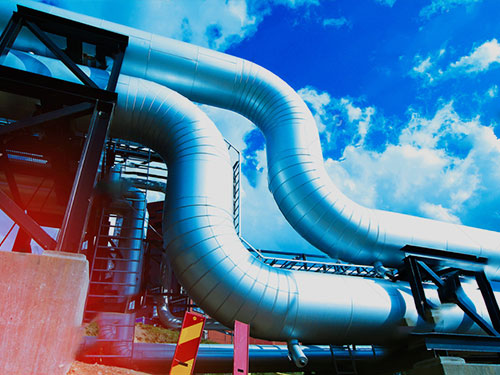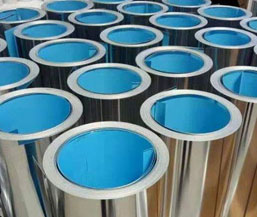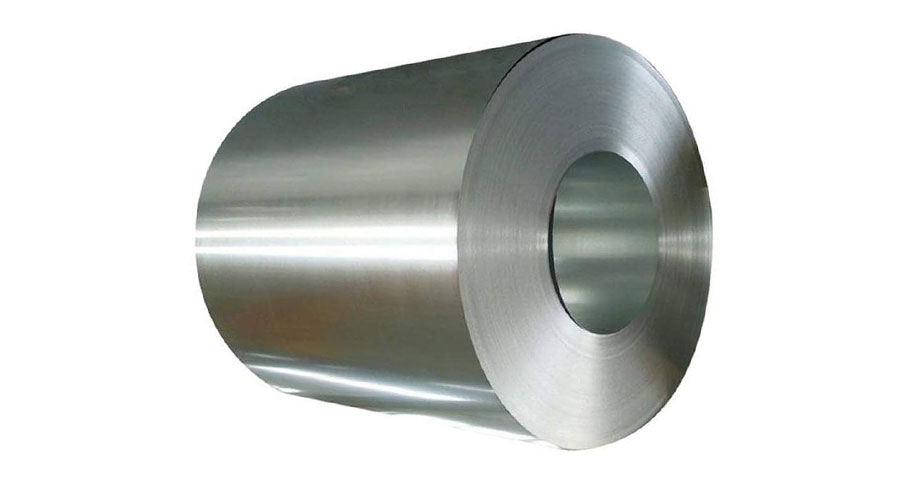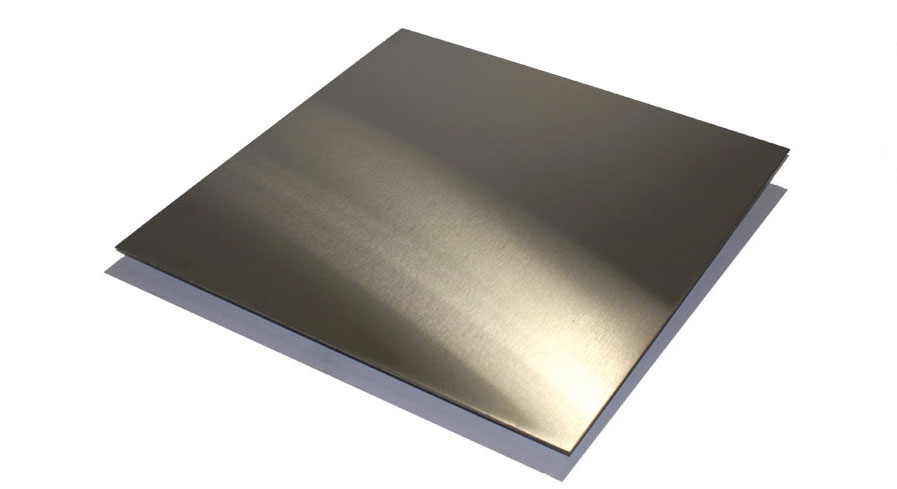Sheet Metal
Metal sheet is a frequently used protective cladding material for industrial insulation systems.
For industrial insulation projects’ requirements, INSPRO® can supply aluminium, stainless, painted, aluminized or galvanized steel sheet materials in any form (roll, plate, trapezoidal, corrugated, patterned, perforated, etc.) with all technical information and logistic support.
Protective metal cladding is installed over insulation systems in order to get:

- Mechanical protection
- Weatherproofing
- Waterproofing
- Fireproofing (in special applications)
A “Vapour (moisture) Barrier” such as; PVC, PVF, PE or as trademarks Surlyn®, Tedlar®, etc. is recommended to be applied inside the sheet metal in order to prevent Corrosion Under Insulation (CUI).
Moisture Barrier laminated sheet metal is damp-proof, anti-corrosive, durable and can be processed as easily as non-coated materials.

Aluminium
A wide range of alloys in accordance with ASTM B209 and tested through EN 10204 are available for aluminium cladding requirements. The most frequently used series in industrial insulation applications are as follows;
1000 or 1xxx Series:
1000 Series Aluminium is a soft and very ductile material, with excellent workability. This material is appropriate for severe forming applications because it works harden more slowly during the forming process. The products of this series are almost pure aluminium with a 99% aluminium content. This series provide corrosion resistance, good formability, weldability and conductivity. Although 1050 series aluminium materials are frequently used in industrial insulation applications, series such as 1060, 1090, 1100, 1180, 1199, 1350 are also used according to the project requirements.
3000 or 3xxx Series:
3000 Series Aluminium is alloyed with Manganese and are high strength. This material also exhibits moderate resistance to chemical agents, atmospheric agents and offers higher mechanical properties and better formability than pure aluminium. Although 3003 and 3105 series aluminium materials are frequently used in industrial insulation applications, series such as 3004, 3005, 3103, 3104, 3150 are also used according to the project requirements.
5000 or 5xxx Series
5000 Series are alloyed with magnesium, and typically used in applications in which corrosion resistance, high strength, good response to surface treatment, and good surface finish are required. These properties are making them suitable for marine, offshore and coastal area applications. Most 5000 series alloys include manganese as well. Although 5005 and 5754 series aluminum materials are frequently used in industrial insulation applications, series such as 5010, 5050, 5182, 5252, 5457, 5557 are also used according to the project requirements.

Stainless Steel
304 stainless steel is the most common stainless steel. The material contains both chromium (between 18% and 20%) and nickel (between 8% and 10.5%) metal as non-ferrous main components. Its electrical and thermal conductivity is lower compared to carbon steel and is non-magnetic. It has higher corrosion resistance than regular steel and is widely used because it is relatively easy to process and shape.
The carbon content of 304H (UNS S30409) is restricted to 0.04–0.10%, which provides optimal high temperature strength.
The carbon content of 304L (UNS 30403) is restricted to a maximum of 0.03%, which prevents sensitization during welding.
The carbon content of 304 (UNS 30400) is restricted to a maximum of 0.08%. Thus 304 is typically used at thin sheets that are formed in articles such as insulation cladding, kitchen sinks or cookware that are also not welded.
316L
SAE 316L grade stainless steel, sometimes referred to as A4 stainless steel or marine grade stainless steel, is the second most common austenitic stainless steel after 304/A2. Its primary alloying constituents after iron, are chromium (between 16–18%), nickel (10–12%) and molybdenum (2–3%), with small (<1%) quantities of silicon, phosphorus & sulphur also present. The addition of molybdenum provides greater corrosion resistance than 304, with respect to localized corrosive attack by chlorides and acids. 316L grade is the low carbon version of 316 stainless steel.
It is commonly used in chemical and petrochemical industry, in food processing, pharmaceutical equipment, medical devices, in potable water, wastewater treatment, in marine applications and architectural applications near the seashore or in urban areas.

Painted / Coated Sheet Metal
Painted sheet metal products are prefered for cryogenic (extreme cold) insulation applications because of high surface emissivity that makes the cladding reflect more heat away compared with similar shiny cladding alternatives.
Besides there are also other advantages such as artsy appearance with aesthetics and increased corrosion resistance.

